Instagram, digital content and influencers: this is the new face of fashion today. But what happened to the magazines, fashion blogs and testimonials so dear to the 80s? They have not disappeared, they have simply transformed.
Today, they coexist and intertwine with the new tools of digital communication, giving rise to a hybrid ecosystem where online and offline merge in a constant and evolving dialogue.
I am Corrado Manenti, and in this article I want to take you on a journey through the figures who have changed the way we tell the fashion story, offering us quite a few valuable lessons in storytelling. From the first digital spaces to today's most followed profiles, we will explore together how the fashion blogger have contributed to making fashion more accessible, authentic and close to the people.
And if you too dream of becoming a fashion blogger and, like us, have a passion for fashion, remember that you don't need catwalks or millions of followers to get started:
you need a voice, an original outlook and a desire to tell fashion from your perspective.
Every great journey starts with a first post, and this might be the right time to start yours.
From blogger to content creator: a brief history of fashion blogging
The fashion blogging phenomenon started around 2004-2005, when platforms such as Blogger and WordPress have made blogging accessible to all.
If we were talking about this now with a member of Generation Z, they would probably point at us as 'boomers'. someone who has become attached to something that is already 'old', a bit like our parents when they used to proudly talk about coin-operated phone calls in telephone booths.
Unlike many things that have evolved or disappeared with changing fashions and technology, the 'blog' section of our website remains FUNDAMENTAL in whatever strategy we want to adopt, from building a product brand to narrating our work as professionals.
For this we can reflect on the evolution of blogging and the figure of the fashion blogger, and thus provide a practical guide and insights for using blogs in 2025.
Initially, fashion blogging was mainly seen as a hobby, a way for fashion enthusiasts to share their thoughts and ideas with the world. But with the passage of time, it has become so much more.
Fashion bloggers began to gain visibility, which was followed by monetisation opportunities. Advertisers and brands began to recognise the value of these authentic and influential voices, and fashion blogging became a career in its own right.
Then, With the advent of social media, the digital fashion landscape has changed once again. Platforms such as Instagram and Pinterest have enabled more immediate and visual image sharing, and fashion bloggers have started to become content creators.
Yet, despite these evolutions, the blog remains a pillar of digital fashion.
It offers a platform on which longer and more thoughtful content can be developed, allowing for a deeper relationship with the audience.
At the same time, there is more creative freedom than with social media, which can be limited by their specific guidelines and algorithms.
While the content posted on almost all social media (with the possible exception of YouTube) disappears in the feed in a matter of moments or seconds, the blog retains the innate ability to give us a historical and remain persistent over time.
Take this article for example: written in 2015, after more than 10 years it is still available on the internet and is updated, searched and found by search engines. At this very moment YOU are here and reading me!
I am sure you are realising its potential, but let's go step by step.

Fashion blogger meaning: let's start with the basics
In an era before social media and when the Internet was still an enigma, blogs were born. In the early 2000s, thanks to platforms such as blogger.com, anyone could create their own online space and share content on any topic.
These early bloggers were part of small communities and focused on making content for fun rather than seeking likes or sponsors.
It cannot be denied, however, that the blogging scene has undergone considerable changes over the years, with many bloggers who have evolved into digital entrepreneurs: we need only think of Chiara Ferragni who from his blog "The Blonde Salad' became a multi-millionaire entrepreneur.
On an international level, a significant example is Leandra Medinewho founded the blog "Man Repeller' in 2010. Originally focused on bizarre and daring outfits that the fashion victim adored, Man Repeller has grown over the years into a lifestyle who has managed to retain his female readers in an extraordinary way.
Even today, the site deals with a range of topics, from fashion to beauty, pop culture and more, but the real focus is Medine himself and his unique personality, capable of making interesting even combinations and garments that are at first sight unlikely.
Another interesting example is Jane Aldridgewith his blog, "Sea of Shoes'founded at the age of 15. Initially, her blog focused on her vintage finds and the eccentric styles she wore, but over time she began to cover more mature topics such as weddings and interior decoration.
This exemplifies the importance of growing your blog with yourself, developing a personal tone and writing style that gives readers a sense of your personality and how you have grown, your references and inspirations.
In parallel, the topics addressed in the blogs also evolved. Tavi Gevinson, who started Style Rookie at the age of 11, expanded the scope of her blog to include topics such as pop culture and feminism, later launching a new site, "Rookie"which covers an even wider range of topics.
Influencers vs Fashion Bloggers: what has changed since the blogging era
Today, when we talk about digital fashion, we tend to use the term 'digital fashion'.influencer' in a generic way, but it is important to distinguish between those who produce content for social media and those who have built their voice from a blog.
L'influencer is a figure born and raised within social networks, a person who, thanks to the reputation gained on platforms such as Instagram, TikTok or YouTube, has the power to influence tastes, choices and lifestyles through photos, videos and sponsored posts. His language is immediate, visual, and strongly linked to interaction with the community.
The term fashion blogger, on the other hand, refers to those who distinguished themselves by creating fashion content on a personal website or blog. These personalities did not just publish outfits or products, but told stories, inspirations, reflectionsa more editorial approach, which required constancy, strategy and a personal vision of the fashion world.
A symbolic moment in the transition from blogger to influencer occurred on 29 September 2009, when Dolce&Gabbana decided to break the rules of tradition and place fashion bloggers in the front row at fashion shows for the first time. A revolutionary choice: until then, only the most established fashion journalists could aspire to the front-rowafter years of 'apprenticeship' in the back rows or even standing.
From that day, credibility gained online began to carry the same weight as that built on the glossy pages of magazines. But with the evolution of social media, the focus gradually shifted from in-depth to speed, from analysis to performance.
In 2025, influencers are the natural evolution of fashion bloggers, but not all influencers are also fashion storytellers.
The difference lies not only in the medium used, but in the way of telling, the care of the content, and the awareness of one's role in an increasingly fluid system between communication, marketing and personal identity.
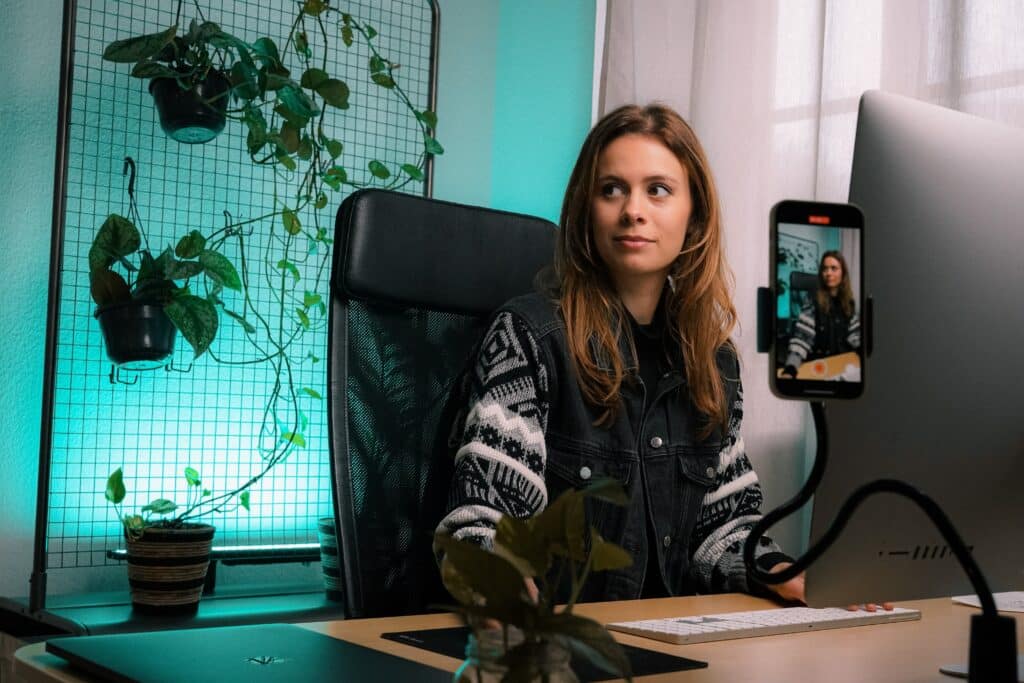
Personal Brand in Fashion Digital
Online content creation is not just about sharing the latest trends or your favourite outfits. It is about creation of your personal brand.
This implies recognise your unique strengths and skills, and build a consistent image across all your platforms and interactions.
A strong personal brand can make the difference between being just another face in the crowd and becoming a successful fashion influencer.
To do so, however, it is essential be authentic and consistent. It means staying true to yourself, even when this might go against the prevailing currents, and a blog can be a powerful tool in this process of personal brand building.
It can function as a platform to explore and share your unique vision, to tell your story in a deeper and more meaningful way, and to build a community of readers and followers who share your interests and values.
In conclusion, from fashion blogging to content creation, digital fashion has come a long way. Yet, despite new platforms and trends, some things remain the same.
Sometimes nothing is more effective and enjoyable than a simple, authentic article written in the classic style of a blog.
Authenticity, passion and a unique voice have always been, and will continue to be, the key to success no matter how the platforms evolve, because "oany superhero needs someone to believe in him.
Platforms will evolve, trends will change, but these fundamental truths will remain.

What future for fashion blogging and creators?
In a world where anyone with a smartphone can become a content creator, the distinction will be found in the ability to create a strong personal brand and build a community of loyal followers.
Looking ahead, the future of fashion blogging and content creation looks bright. Interest in fashion shows no signs of slowing down, and the demand for authentic and influential content is stronger than ever.
At the same time, the monetisation opportunities continue to expand. From collaborations with brands, to selling products directly through blogs or social media, to affiliate programmes, there are more and more ways to turn a passion for fashion into a lucrative career.
But, as always, success will not only be given to those who follow trends, but to those who set them. These are the true innovators, those who are able to see beyond the current digital fashion landscape and imagine new possibilities.
As for the role of the blog, despite the popularity of platforms such as Instagram and TikTok, the blog does not seem destined to disappear.
On the contrary, fashion bloggers continue to offer a unique point of view in a space designed to express thoughts and ideas in a more in-depth and detailed way that is still relevant today.
The blog, therefore, continues to represent a point of reference in the panorama of digital communication. A place where creativity merges with analysis, the personal brand meets the audience, and fashion meets culture and society.
The future of digital fashion will be increasingly interconnected, dynamic and open to new forms of expression. As always, success will be for those who manage to evolve with the times while remaining true to themselves and their unique vision. Because, in the end, that is what it means to be a true content creator in the fashion world.

Newsletters, the new frontier of blogging
There was a moment when we started reading emails again, all of a sudden, not just to reply as politely as possible to Friday's 'I hope this email finds you well' at 5 p.m. Suddenly the whole world, and I'm not the fashion world, stopped.
So even the deserted catwalks, turned-off spotlights and cancelled shootings gave way to a question with an apocalyptic tone: how to continue to tell the style when everything around seems to stand still? It was then, during the long hanging days of the pandemicthat we witnessed the return of the newsletter.
Writers, journalists and fashion blogger Suddenly deprived of their usual spaces, they turned to email, rediscovering the authentic power of calmly, thoughtfully and sincerely written words.
What at first seemed only a momentary fix soon became a movement, a gentle revolution capable of restoring value to ideas, creativity and human connection.
Today, in 2025what was born as a reaction to the crisis has become an extraordinary opportunity for those who dream of becoming fashion bloggersa chance to stand out, to tell the fashion story outside the canons imposed by social media, creating a deep and lasting bond with its readers.
Because after all, and we have already said this, becoming fashion blogger is not just about sharing outfits or following trends, but having a voice that can excite, inspire and leave a mark.
The newsletter is the ideal place to cultivate this dreamintimate as a personal letter, strong enough to reach hundreds, thousands of people.
If there is a perfect moment to start, that moment is now: let your voice take centre stage, and start writing the story only you can tell today.
Guide 2025 for making the most of your Blog:
Before even embarking on the road to becoming a fashion blogger and thus a storyteller, it is important to know exactly where you want to go and how you intend to do it. More than just a strategy, you need a real personal vision, capable of telling the world who you are through what you write and share.
Building a following takes time, so it is important to understand who you are as "digital character"and whom you are addressing. In addition, content planning can be crucial for increasing followers, with the aim of creating content that engages your target audience.
Creating a true positioning, building a following and becoming an opinion leader is not an easy task, it requires clarity, organisation and above all originality.
How do I create quality content?
To become a successful fashion blogger, the quality of the content you publish is crucial. It is not enough to write simple articles, you have to turn your blog into a personal digital magazinerich in stimulating and authentic content that reflects your identity.
Tell the fashion story through exclusive interviews, explore insights into new trends, reveal the behind-the-scenes of your creativity and share style tips that only you can offer. Remember: the more original and useful your content is, the more engaged and loyal readers will feel.
SEO Tip:
Use keywords strategically in the main titles, subtitles and naturally in paragraphs. This will help increase the visibility of your blog in search results.
Optimise your blog for SEO: be found by your ideal readers
One of the biggest challenges for a fashion blogger is to be found online by his target audience. This is why taking care of SEO (Search Engine Optimisation) is crucial. Research the most effective keywords for your industry and use them naturally within your content, always respecting the readability and quality of your articles.
Don't limit yourself to text: also take care of images, always including the main keyword in descriptions and alternative text. Also, remember to optimise your meta tags and take care of the internal structure of your articles with well-defined titles and subtitles (H2 and H3). The more visible you are on Google, the better chance you have of rapidly growing your audience.
Engage your audience: turn readers into a loyal community
Being a fashion blogger does not simply mean publishing interesting content, but above all establishing a relationship of trust and interaction with readers. The blog is the ideal place to build this relationship. Engage your readers by asking for opinions, always responding to their comments and creating content that invites them to actively participate in the conversation.
You can share surveys on favourite trendsstimulate discussions on current topics or ask for suggestions on upcoming topics. An active and loyal community becomes your real added value and a powerful tool for future collaborations or monetisation opportunities.
The next big opportunity could be just around the corner: make sure you catch it before the others do!
What if, in addition to telling the story of fashion, you actually started to create it?
Your fashion blogger look can become the first step towards building something unique: a fashion line signed by you or a personal brand speaking your language and telling your vision!
👉 Find out how to make the leap by booking a free consultation: you choose the day and time, we take care of the rest!
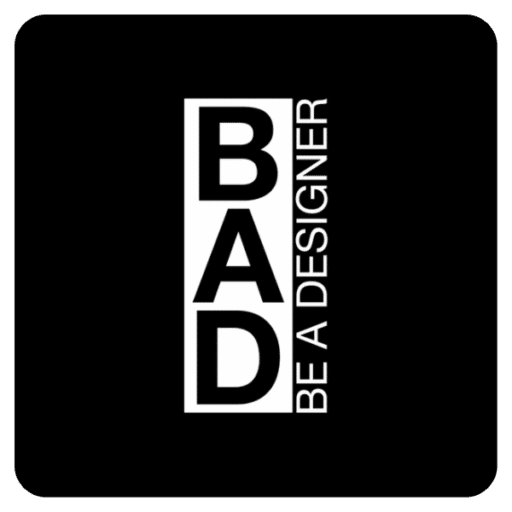
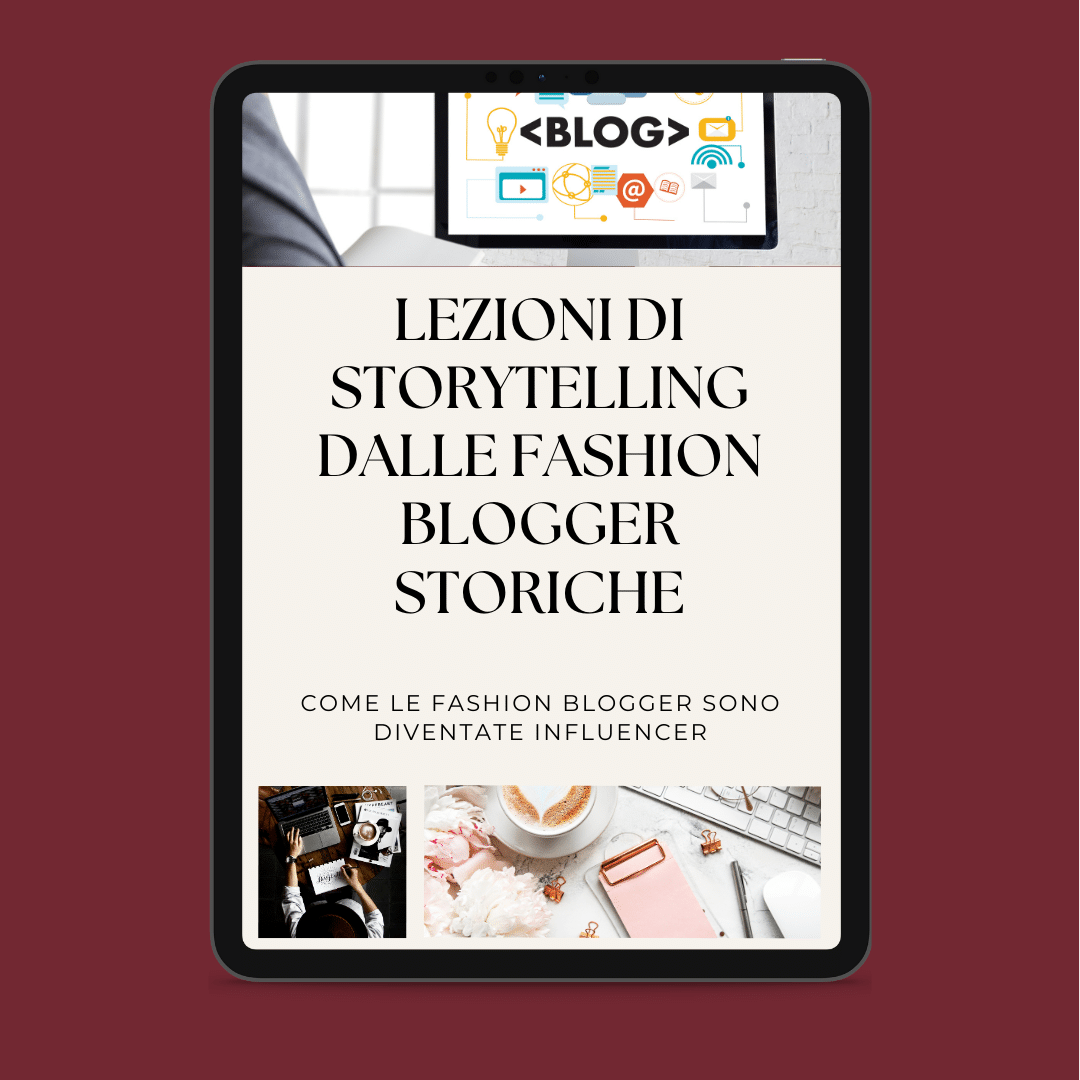

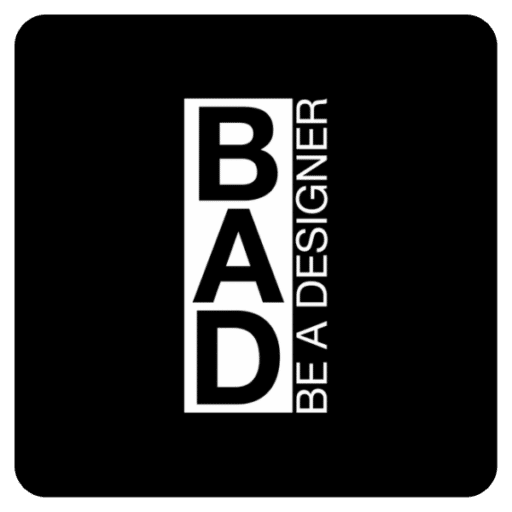











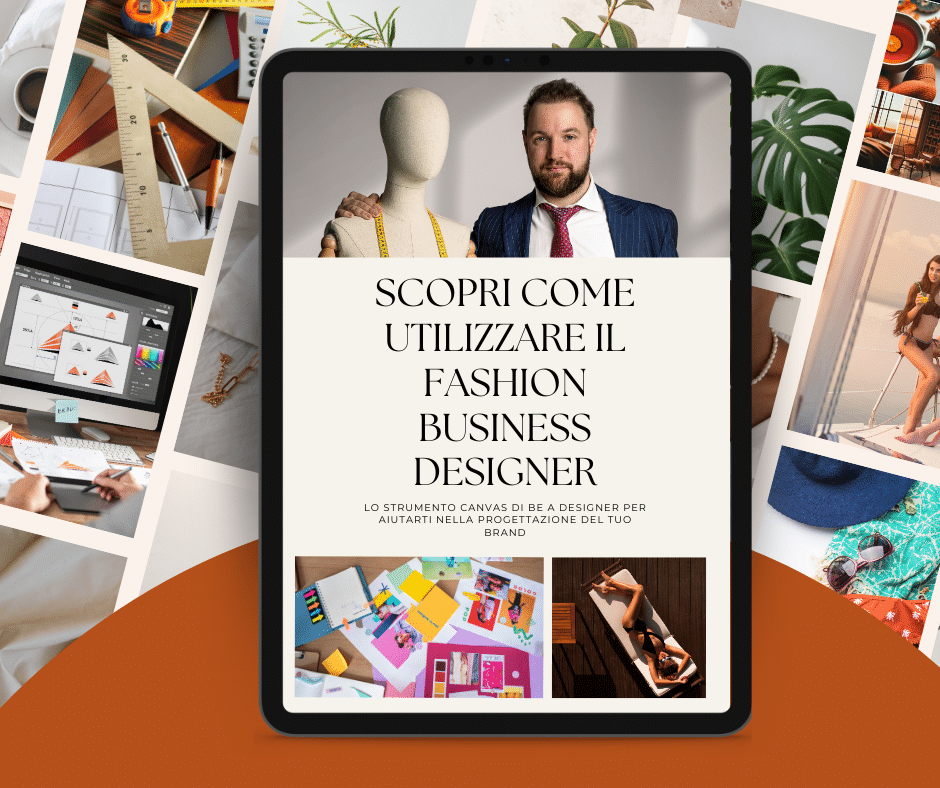
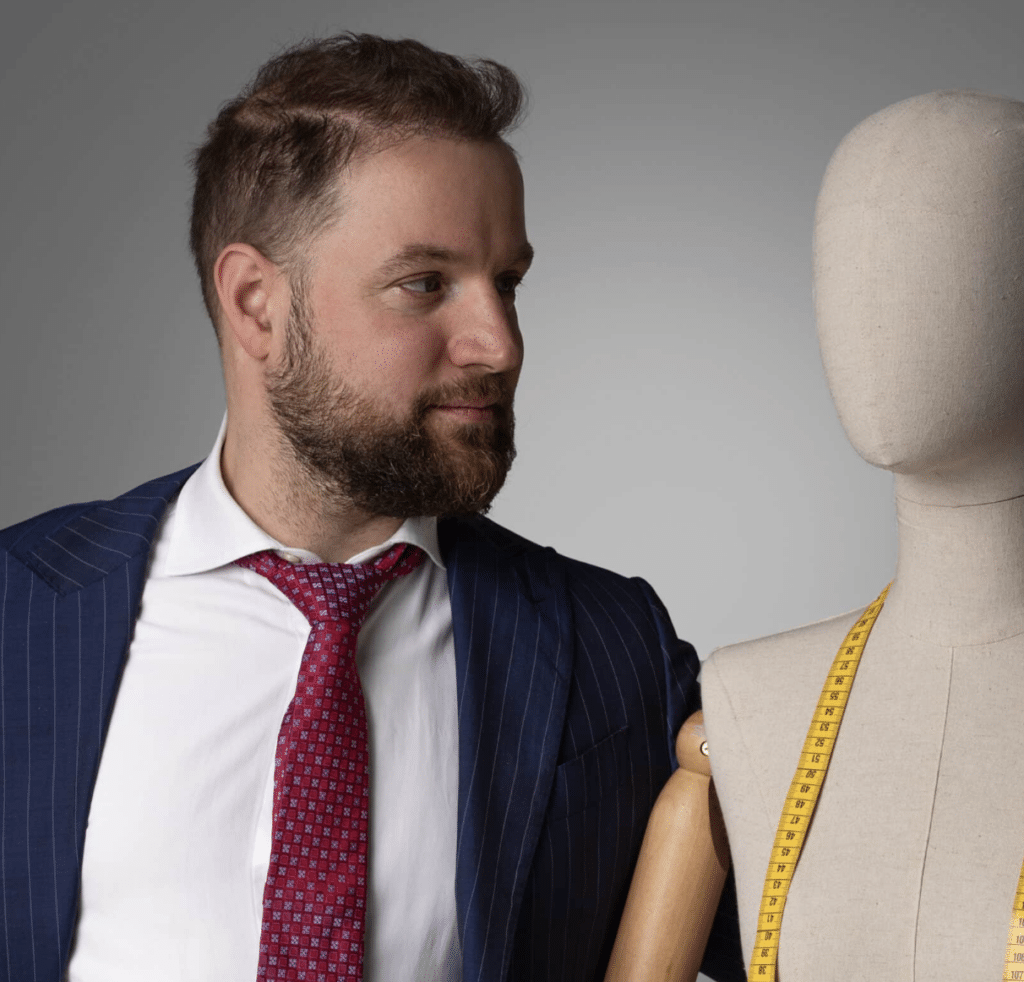
As a small niche brand, we at Spirit of St. Louis do not have a large blog where we tell stories of fascinating eras, such as the mix of absurd coincidences that gave rise to the Lindy Hopor hot topics such as the phenomenon of fast fashion or, again, how we create our modern vintage-style collections.
We don't do this just for SEO reasons, but mainly because we like to tell people about our style and passion for past eras (particularly from the first half of the American 20th century) from which we derive the enthusiasm to continue doing.
We find it absurd that most brands have sites dedicated exclusively to sales.
Communication aside, where is the passion?
The blog is especially indispensable for explaining the inspirations behind one's brand and especially fashion collections.
This concerns both bloggers and companies.
I am surprised that many do not make use of it at all, leaving the task to the 'sponsors' of Google & C.
Shouldn't fashion above all be about involvement and passion?